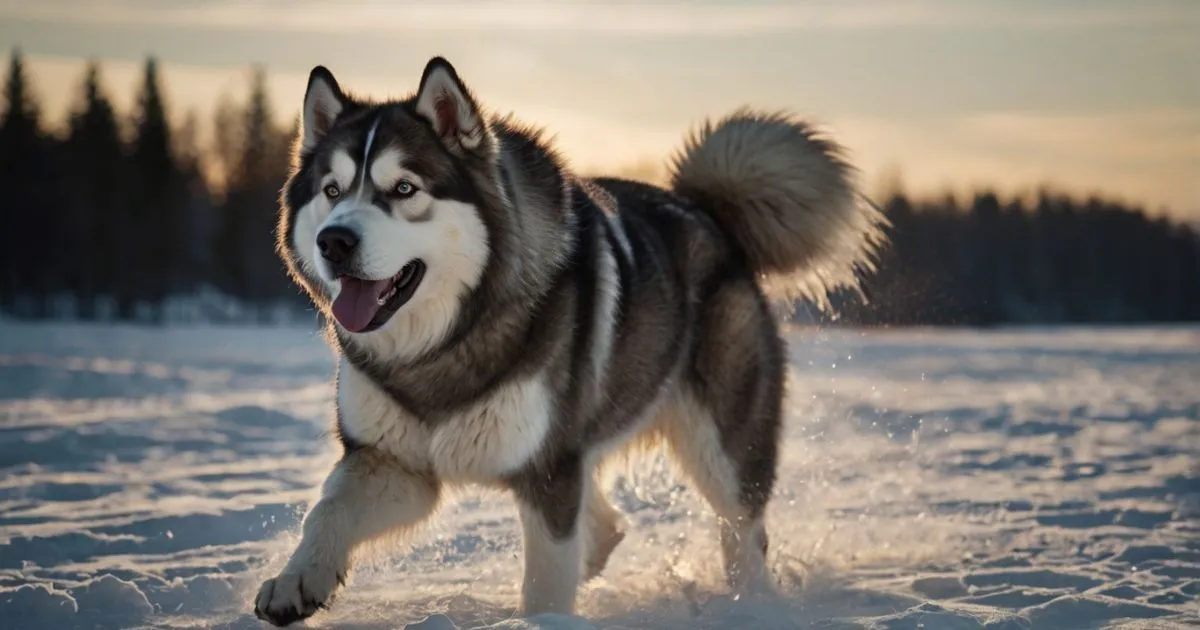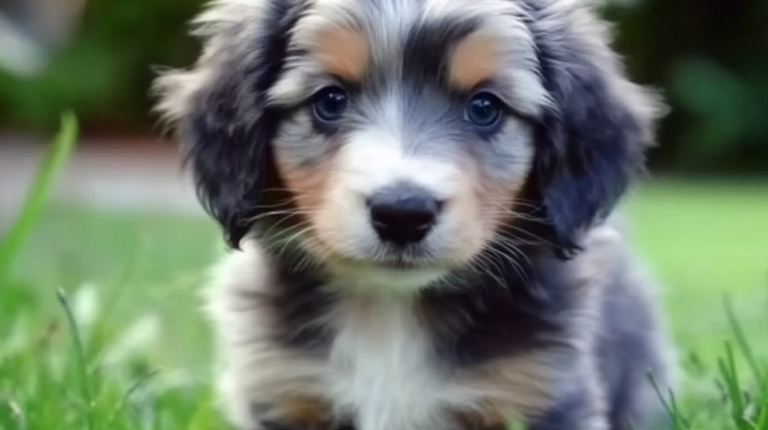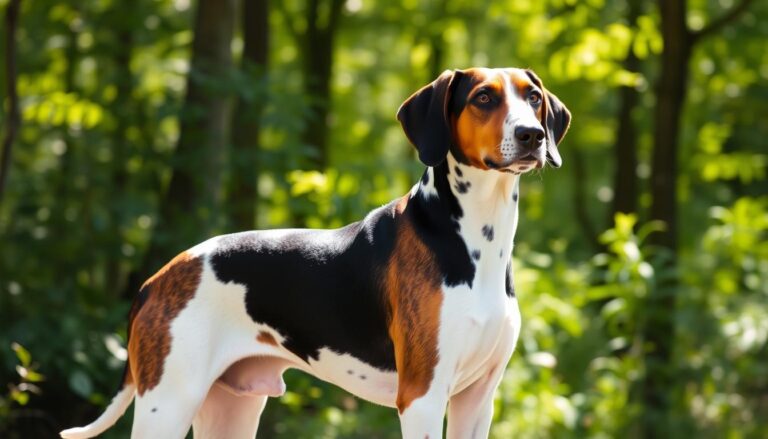Alaskan Malamute: The Majestic Arctic Companion Dog
magine walking through icy landscapes, with the sky stretching wide above and the air biting at your face. The Alaskan Malamute is more than just a dog; it’s a powerful, elegant breed known for its strength, loyalty, and beauty. This breed isn’t for everyone, but if you’re after a steadfast, adventurous companion, the Alaskan Malamute could be perfect.
Thinking about getting one of these amazing animals? Learning about their history, special qualities, and care needs is crucial. It will help you decide if an Alaskan Malamute is the right choice for you.
Here’s an overview of the Alaskan Malamute in a table format:
| Attribute | Details |
|---|---|
| Official Name | Alaskan Malamute |
| Common Name | Malamute |
| Pet Height | 23 to 25 inches (58 to 64 cm) |
| Pet Weight | 75 to 100 pounds (34 to 45 kg) |
| Lifespan | 10 to 14 years |
| Smartness Level | Intelligent but independent |
| Engagement in Play | Very high energy and playful |
| Human-Friendly | Friendly, loyal, and affectionate |
| Animal-Friendly | Can be dominant but generally good with other dogs |
| Favorite Food | High-protein dog food, meat, fish |
Table of Contents
History and Origins of the Alaskan Malamute
Ancestry of a Sled Dog Legend
The Alaskan Malamute’s history goes back thousands of years to the Mahlemut people of Alaska. These dogs were made to survive the harsh Arctic climate. Unlike other sled dogs, Malamutes were built for endurance and strength, able to carry heavy loads over long distances.
The bond between the Mahlemut people and their Malamutes is strong. These dogs helped carry supplies and pull sleds. In return, the Mahlemut cared for and protected them. This strong, independent nature has lasted through the years, making Malamutes a favorite among Arctic explorers and adventurers.
Unique Characteristics of the Alaskan Malamute
The Alaskan Malamute is often confused with the Siberian Husky, but they are different. Huskies are smaller and bred for speed, while Malamutes are built for heavy-duty work. Their large frame, broad head, and facial markings make them iconic. Known for their sturdy bodies, thick coats, and strength, Malamutes stand out in both physical form and purpose.

Physical Characteristics of the Alaskan Malamute
Appearance and Build
The Alaskan Malamute is a large, muscular dog built for strength. Male Malamutes weigh between 85 and 100 pounds, while females are slightly smaller, weighing between 75 and 85 pounds. Both genders are about 23 to 25 inches tall at the shoulder, giving them a balanced, compact build that helps with endurance.
| Trait | Male | Female |
|---|---|---|
| Height | 23-25 inches | 22-24 inches |
| Weight | 85-100 pounds | 75-85 pounds |
| Build | Strong, muscular | Slightly smaller but sturdy |
Coat Colors and Patterns
The Alaskan Malamute’s coat is a defining feature, coming in colors like black and white, gray, sable, and red. A signature feature is the “mask” pattern on their face, with each dog’s markings being unique. This thick, double coat not only adds to their aesthetic appeal but also provides insulation against extreme cold, protecting them during Arctic journeys.
The Malamute’s Thick Coat: How to Care for It
With a coat built to endure the Arctic chill, Alaskan Malamutes need regular grooming. Outside of shedding season, brushing once a week is usually enough. But during shedding season, daily brushing is essential. Mats can form if the undercoat isn’t properly managed, so investing in a high-quality brush designed for double coats is wise. Regular grooming sessions also allow you to check for any skin issues, which Malamutes can be prone to.
Temperament and Personality of the Alaskan Malamute
Loyal and Playful Nature
Alaskan Malamutes are very loyal and bond deeply with their families. They are recognized for their loving, sociable, and energetic nature. This makes them great for families, including those with kids.
Even though they are friendly, Malamutes can be independent. This means they might not always listen. But, with patience and positive training, they can learn to follow commands.

Socialization and Training Tips
Early socialization is key for a well-adjusted Malamute. They are social animals but need guidance to interact well with others. Start training early using positive methods, as punishment can harm their independent nature.
Teach basic obedience and give them mental challenges like puzzle toys. This keeps them happy and engaged.
Alaskan Malamute as a Working Dog
Sledding and Pulling Instincts
Alaskan Malamutes were designed for hauling heavy loads over great distances. They are not fast but are strong and enduring. Today, they are still used in sledding sports and other activities that use their natural pulling ability.
Other Work Roles
Malamutes are smart and eager to work, making them versatile. They are used in search-and-rescue, therapy, and as loyal companions. Their desire to work comes from their history with the Mahlemut people.
Exercise and Living Needs of the Alaskan Malamute
Physical Activity Requirements
Alaskan Malamutes need lots of exercise, at least 1-2 hours a day. They love activities like hiking, running, and agility courses. If they don’t get enough activity,they may get bored and cause trouble.
A fenced yard and outdoor space are essential for them. They enjoy exploring and need room to roam.
Suitable Living Environment
Malamutes prefer cooler climates but can adapt to warmer areas. Keep them cool with shade, water, and air-conditioned spaces in hot weather. In cold areas, they love the snow. In warmer places, avoid exercising them during the hottest times and ensure they have fresh water.
Feeding and Nutritional Needs
Ideal Diet for Alaskan Malamutes
Alaskan Malamutes need a high-protein diet to keep them active. Choose dog food with meat as the main ingredient and omega fatty acids for their skin and coat. Adult Malamutes usually eat twice a day. Puppies may need smaller, more frequent meals for growth.
| Time | Meal |
|---|---|
| Morning | High-protein kibble with vegetables |
| Evening | Balanced meal with lean meat, rice |
Health Concerns and Lifespan
Common Health Issues
Alaskan Malamutes are generally healthy but can face issues like hip dysplasia, hypothyroidism, and bloat. Regular vet visits can spot problems early. Genetic tests for breeders help avoid inherited diseases. To prevent bloat, feed them smaller meals and avoid exercise after eating.
Longevity and Quality of Life
Malamutes live 10-14 years with the right care. Regular vet visits, balanced diet, and exercise keep them healthy and happy. They also need mental challenges to avoid bad behavior.
Owning an Alaskan Malamute: Is It Right for You?
Pros and Cons of Alaskan Malamute Ownership
Pros and Cons of Alaskan Malamute Ownership
Pros:
- Deeply loyal and affectionate with families
- Energetic and adventurous, ideal for active owners
- Striking appearance and unique history
Cons:
- Requires high levels of exercise and mental stimulation
- Independent streak can make training challenging
- Heavy grooming needs, specially during shedding season
What to Consider Before Getting an Alaskan Malamute
Thinking of getting an Alaskan Malamute? Make sure you’re active. They need lots of exercise and mental challenges. Their grooming and social needs are big. If you’re up for it, they’ll be a loyal friend.
Frequently Asked Questions (FAQ)
Are Alaskan Malamutes good family dogs?
Yes, they’re gentle and loving, great with kids. But, watch them and socialize them early.
Do Alaskan Malamutes get along with other pets?
With early socialization, they can live well with other pets. But, they might chase small animals.
How often do Alaskan Malamutes need grooming?
Brush them weekly, but daily during shedding season.
What makes a Malamute different from a Husky?
Malamutes are bigger and stronger. Huskies are smaller and faster.
Can Alaskan Malamutes live in warm climates?
They can adapt, but cooler places are better for them.
Conclusion: Is the Alaskan Malamute Your Ideal Companion?
The Alaskan Malamute is a mix of beauty, loyalty, and strength. If you want a resilient, adventurous







